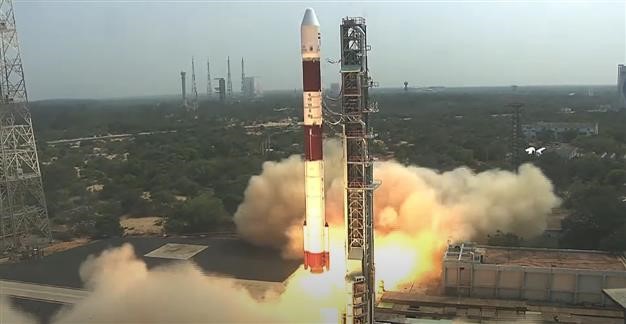Sriharikota (AP), May 29
The Indian Space Research Organisation (ISRO) on Monday successfully launched a second generation navigation satellite, using a GSLV rocket with a cryogenic upper stage to do the job.
NVS-01 would augment the country’s regional navigation system, providing accurate and real-time navigation.
At the end of a 27.5-hour countdown, the 51.7-metre-tall, 3-stage Geosynchronous Satellite Launch Vehicle lifted off at a prefixed time of 10.42 am from the second launch pad at this spaceport, situated about 130 km from Chennai. This was GSLV’s 15th flight.
The second generation navigation satellite series dubbed as a significant launch would ensure the continuity of NavIC (Navigation with Indian Constellation) services — an Indian regional satellite navigation system, similar to the GPS, providing accurate and real-time navigation.
Signals from NavIC are designed to provide user position accurate to better than 20 metres and timing accuracy better than 50 nanoseconds.
ISRO Chairman S Somanath congratulated the entire team for the “excellent outcome” of the mission.
“NVS-01 has been placed in precise orbit by GSLV. Congratulations to the entire ISRO team for making the mission happen,” he said in his post-launch address from the Mission Control Centre.
Today’s success came after the GSLV F10 ‘debacle,’ he said referring to the anomaly in the cryogenic stage of the launch vehicle in August 2021, following which the then mission could not be realised.
He expressed joy that “corrections in cryogenic stage and lessons learnt have really paid benefits” and credited the Failure Analysis Committee for addressing the problem.
Somanath further said NVS-01 is a second generation satellite with additional capabilities. The signals will be more secure, civilian frequency band has been introduced, he said. This was one of the five of such satellites.
Discussions
Discussions
